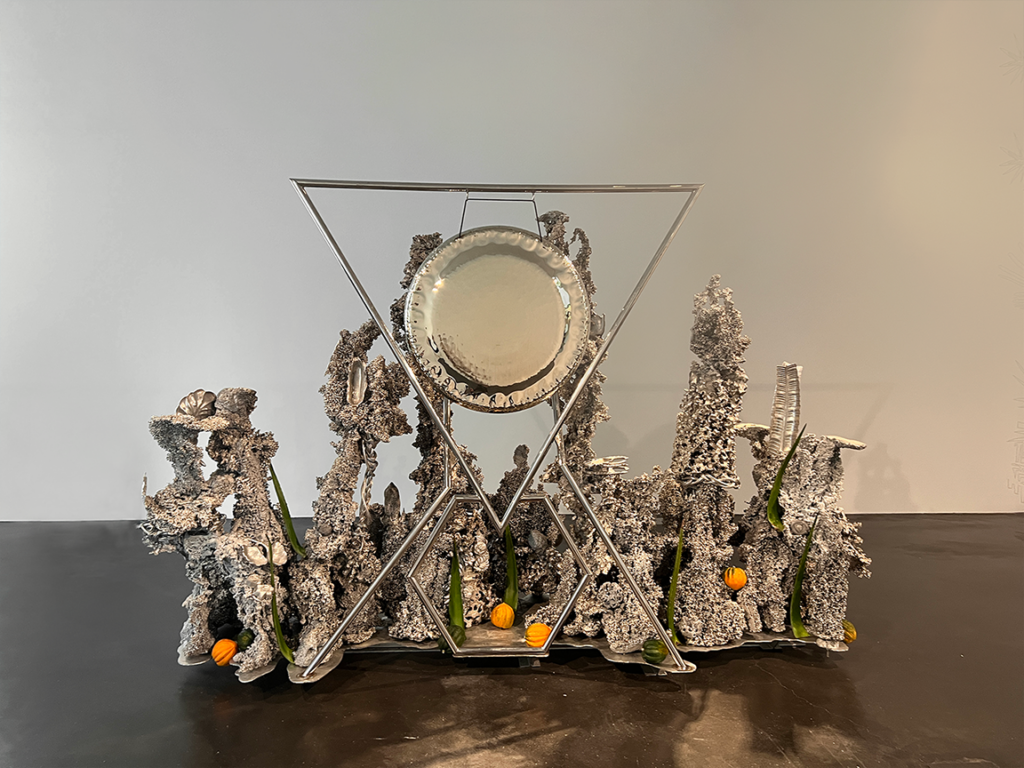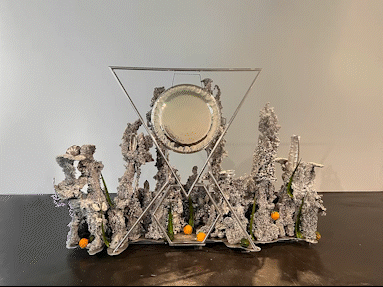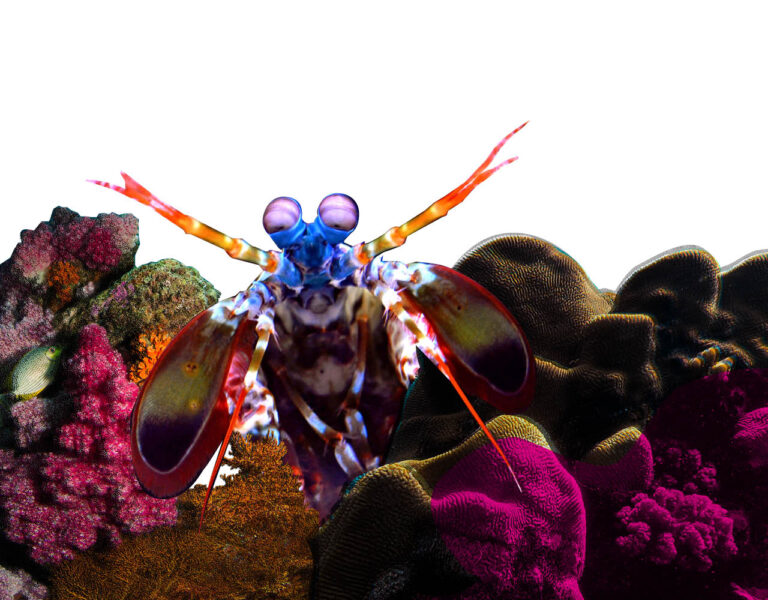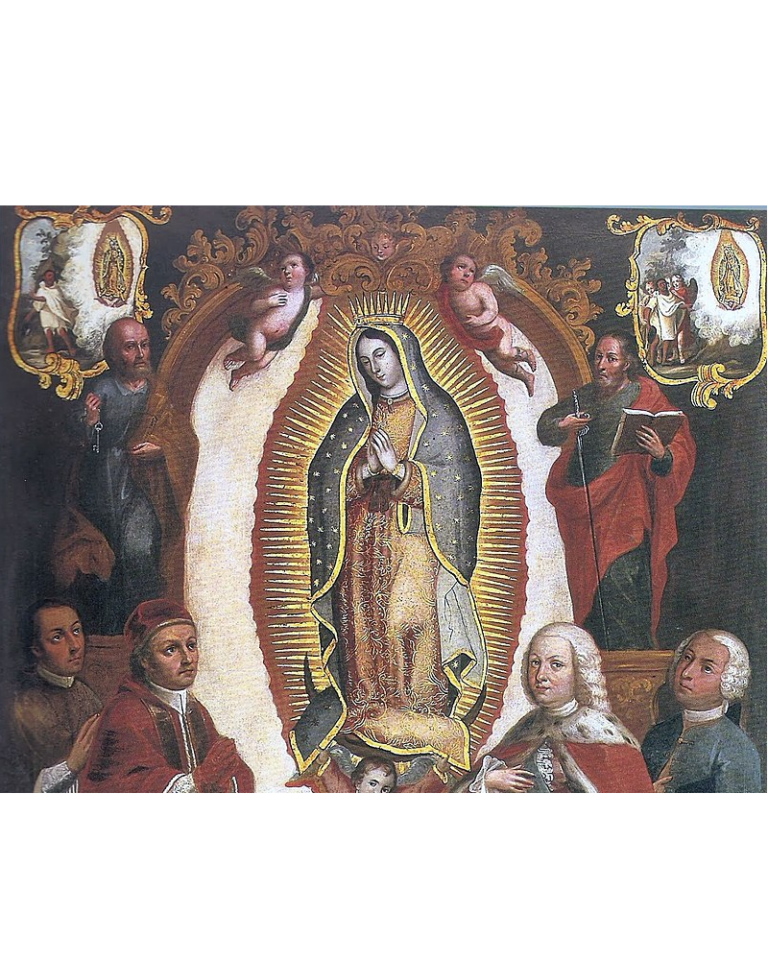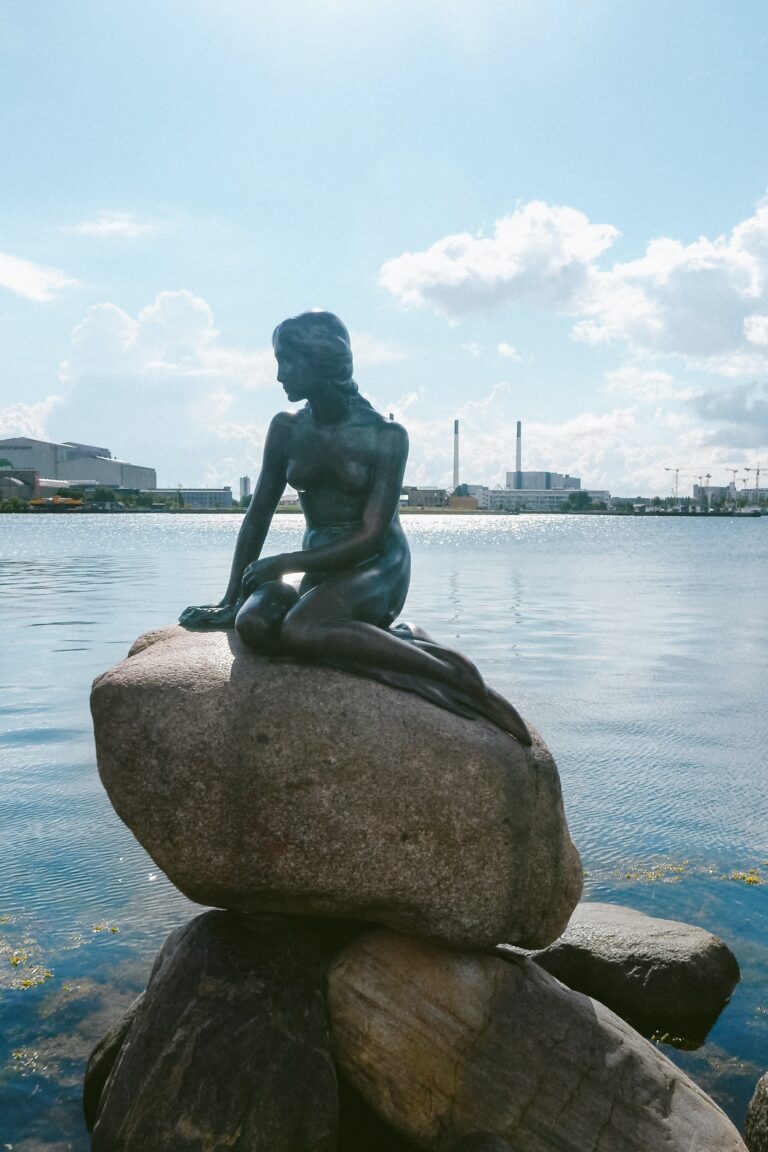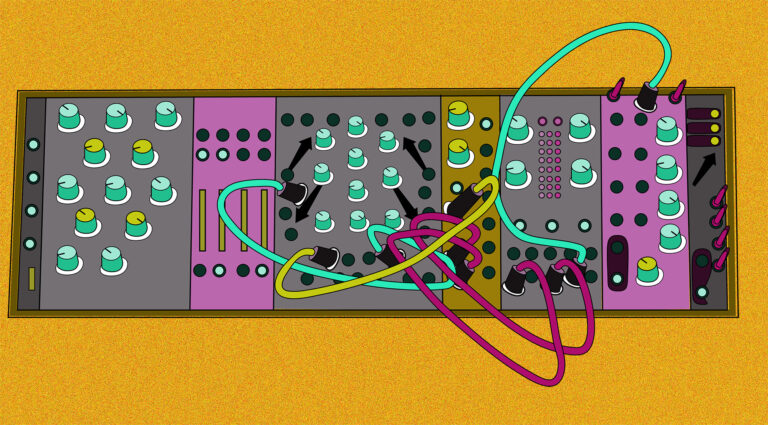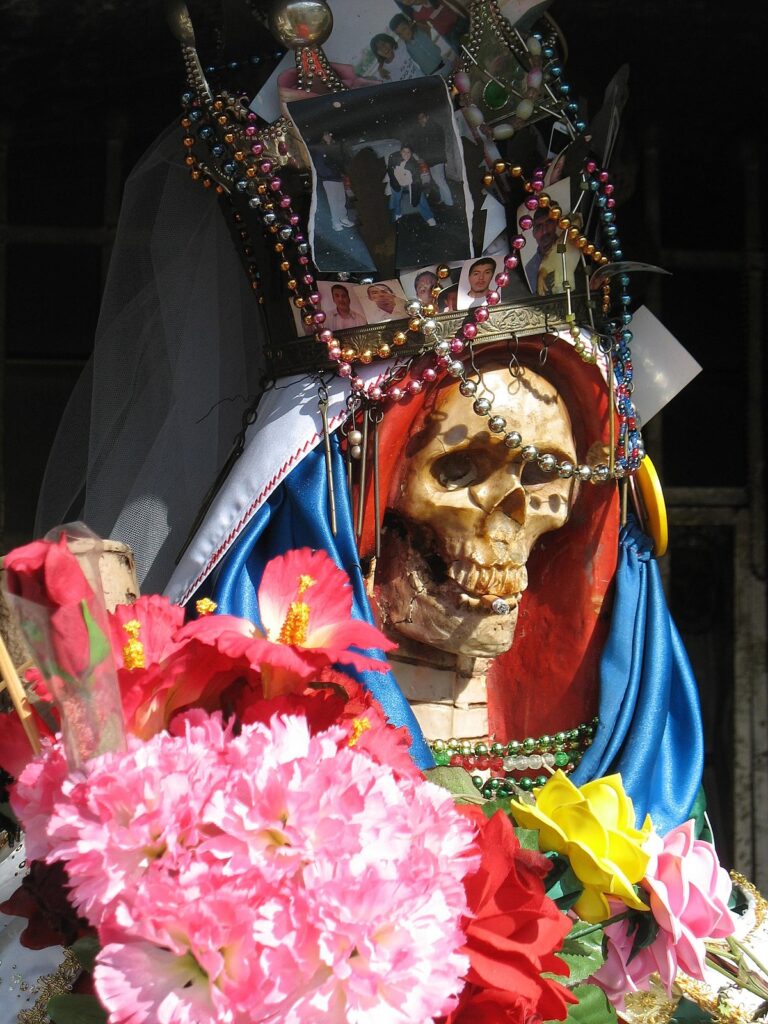Transcending Borders with Curanderismo
Guadalupe Maravilla’s paintings and sculptures might initially look like a random assortment of loosely associated objects, like anatomical models, animal figurines, indigenous symbols, and modern technologies. However, understanding the purpose behind his art reveals that these combined elements are part of a new and contemporary ritual within curanderismo, the Pre-Columbian system of knowledge.
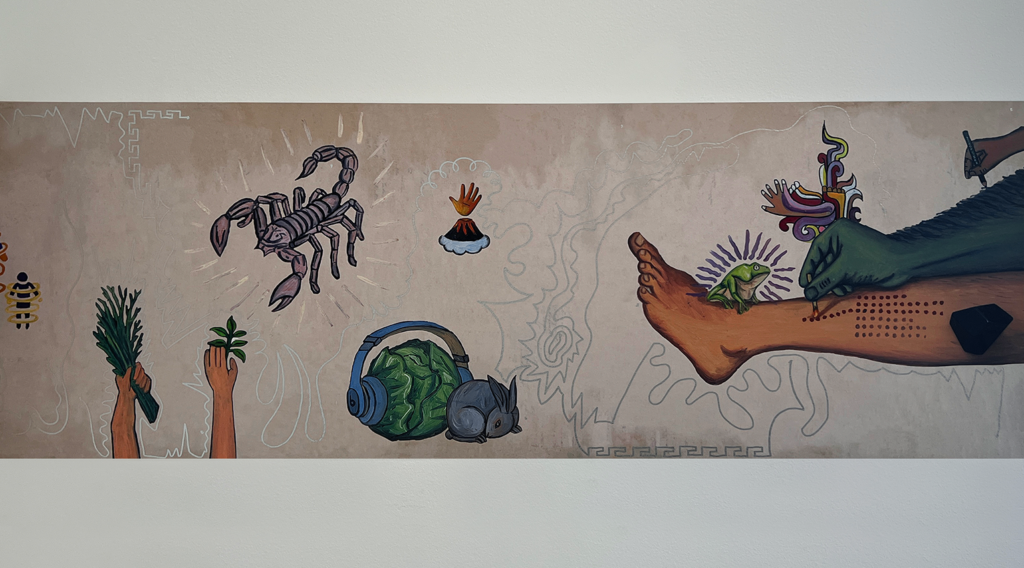
The first room is full of icons and illustrations that function like hieroglyphs and imagery from the Classic Maya civilization. We can decipher a story that holistically connects Maravilla’s emotional and physical experiences as an undocumented immigrant and a cancer survivor.
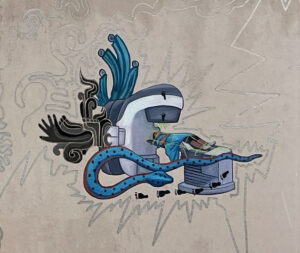
Asking other immigrants to participate in the line-drawing game tripa chuca, Maravilla uses the game as a general retelling of the migrant experience. The lines serve as the context that literally surrounds the story about his health. His mural, Tripa Chuca: Digital Mythology, seems to show the artist’s personal account, we see three experiences common in the stories of many other Latine immigrants: (1) victimization by malevolent forces, like war and greed, (2) lack of harmony with one’s environment, like a new country, and (3) feeling strong emotional states, like trauma and loss. In curanderismo’s holistic view of mind and body, disease and illness follow these experiences. Adopting this philosophy is how we can associate Maravilla’s battle with cancer with his painful journey across the border.
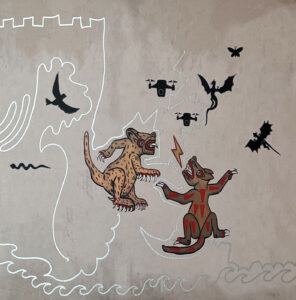
Like the stone reliefs giving exposition to a Maya ritual site, Maravilla’s mural reveals the mythic origins essential to the inhabitants of the next room, the Disease Throwers. Guarded by tall aluminum stela, these animistic sculptures have an aesthetic and spiritual presence.
Trauma relief became a massive focus for Maravilla during his recovery from cancer. In his journey to recovery, he discovered sound therapy as a practice that combatted the adverse effects of radiation therapy. Demonstrating a union of Western and indigenous medicine, the found objects in the sculptures represent the range of healing practices he encountered on his journey between El Salvador and the United States. Anatomical models, food and plants, and figurines of sacred/symbolic animals are the elements that fuse into his sculptures. Disease Thrower #14 was part of a sound therapy ceremony for a multicultural community, inviting victims of migrational trauma, cancer, or other diseases and encouraging their loved ones to join them in healing. By having a ritualistic function, these art objects are more than aesthetic representations of healing; they possess a spirit capable of interacting with the natural world’s wounds. Following Maravilla’s cohesive journey, we learn how the world’s wounds can be generated by attempting to delineate the mind and body, the natural and supernatural, and ultimately ourselves and other nations.
